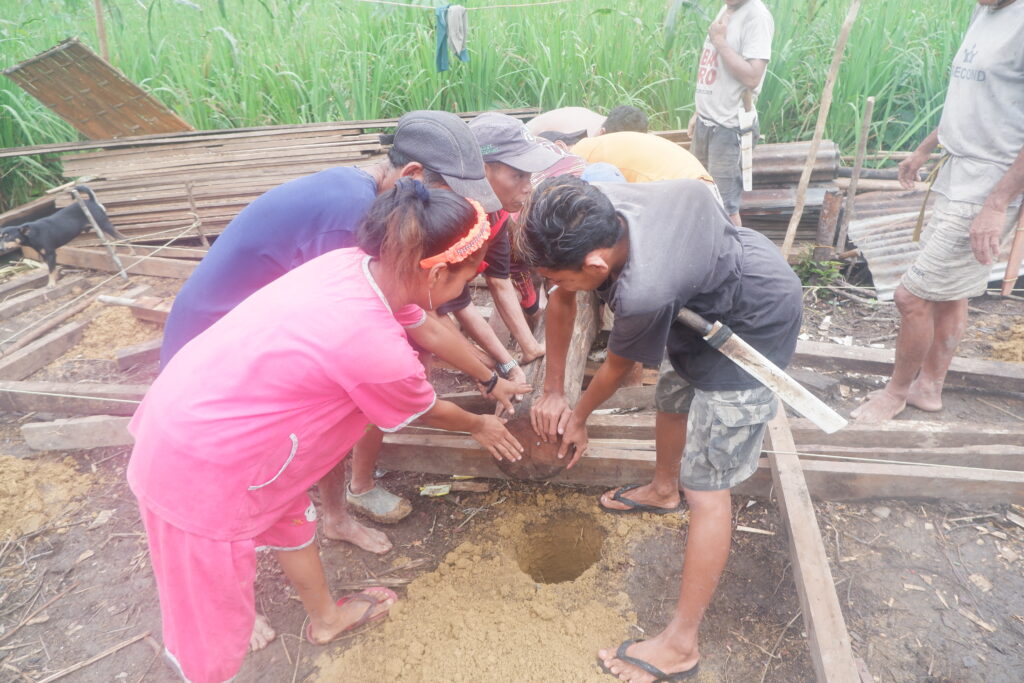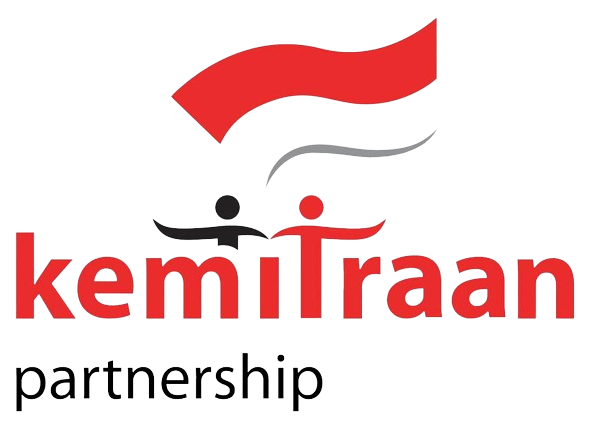Simarantihan is one of the hamlets in Suo-Suo village, Sumay District, Jambi Province. Simarantihan Hamlet, lives one group of indigenous people, namely the Talang Mamak indigenous community. According to KKI Warsi's records, the Talang Mamak traditional community mostly lives around the Bukit Tigapuluh National Park, which is administratively located in four sub-districts, namely; Batang Gansal, Kelayang, West Rengat, and Batang Sumai sub-districts.
However, there are also those who explain that the Talang Mamak community is located in five sub-districts. Namely, the sub-districts of Rakit Kulim, Batang Gansal, Batang Cenaku, West Rengat, and Seberida (Nurman et al., 2014). In general, the people of Talang Mamak depend on natural products for their livelihood. They farm, garden and also use forest products.
Historically, the Talang Mamak community in Simarantihan hamlet actually did not live communally. Quoted from the report Frankfurt Zoological Society (FZS) entitled Semerantihan Agroecosystem (2012), the Talang Mamak community inhabited the forest in a scattered manner in the 1980s. In 1996, through a regional government social project, the Talang Mamak community finally settled communally. also occupy residential houses that have been built by the government.
Through interviews with several traditional leaders, it was explained that initially the community lived spread out and nomadic. They follow the location of the fields and gardens they open. This can be proven through the existence of their ancestral graves.
Talang Mamak and Religious Dynamics
Along the way, the existence of local beliefs in the Talang Mamak Community has long existed. As time went by, some people began to choose to switch to other religions. Today, in society there are three religions adhered to; ancestral religions, Islam and Christianity. From the FZS report, several Talang Mamak residents converted to Islam since 2012. The report also explains that the religious conversion process which was carried out coincided with the national project to create Electronic Identity Cards.
Meanwhile, in the narrative of one of the people of Talang Mamak who embraced Christianity, he said that Christianity first entered Talang Mamak around 2015-2016. Also, several churches have assisted indigenous communities by establishing Sialang kindergartens. This statement was reinforced by Pastor Candra. That they first interacted with indigenous communities by carrying out social, educational and health activities.
Of course the choice to change religion is motivated by several reasons. There are those who argue that it is because of the ease of administration, there has been a lot of help from religious institutions and religious figures, there is a negative stigma towards their local beliefs, and even their own willingness or desire.
In the process of observing and interviewing the Talang Mamak community, I myself experienced an interfaith experience that made me wonder. I had this experience when I first visited a residential area where the majority were Christians.
The visit coincided with mutual cooperation activities for the establishment of the church. While I was resting and enjoying a treat, none of them offered me food or drink. With a little courage and holding back shame, I tried to ask them.
“Jokueh, Inya doesn't want to drink nyeh and eat nyeh mokonen for us, like urang luwe doesn't want to (I thought you wouldn't want to eat and drink what we make like outsiders).”
Also when I go to the outdoor market to shop for basic necessities. One of the sellers asked me about my activities by asking "they are animists there, right?"
I shared this experience with one of the KKI Warsi facilitators, Ari Muhammad, who also accompanied the community. Ari said that it was true that outsiders often stigmatized the Talang Mamak indigenous community, including aspects of their beliefs.
These experiences are enough to make me believe that the existence of adherents of the ancestral religion in Talang Mamak is increasingly being abandoned due to one of these factors. The above phenomenon has actually been explained by Samsul Maarif in his book The Ups and Downs of Recognition of Ancestral Religions (2017). How adherents of ancestral religions are discriminated against, stigmatized and forced to change religions for various reasons.
Custom as a space for encounter
Currently the Talang Mamak community in Simarantihan is divided into two; old hamlet and new hamlet. The majority of new hamlets are filled with Christian people and the old hamlets are filled with the majority of adherents of ancestral religions and Muslims. Some people said that economic problems meant they had to sell some of their land, the distance from home to garden was very far, and of course religious identity issues were the reasons for them to move to new settlements.
Even though interactions between Talang Mamak communities are still ongoing, I see that several Talang Mamak communities have become divided regionally because of identity. However, apart from this, we still find families in the Talang Mamak community who have different religious identities.
One traditional youth figure who did not want to be named explained that in his family there are several family members who adhere to Islam, Christianity and religious beliefs. Even though they have different identities and are separated by houses and distance, they still interact with each other, because of their blood relationship.
From the phenomenon above, of course this can be exploited for the purposes of identity politicization based on sentiment. Fortunately, the Talang Mamak indigenous people themselves have a medium for maintaining togetherness and solidarity, namely their customs.
The Talang Mamak indigenous community places several activities related to nature as part of their customs. From Fahmi's explanation as head of the traditional institution in Simarantihan, there are several traditional activities related to nature such as, menugal (farming), balobah (harvesting forest honey), and Bakumanformer (treatment). Almost all traditional activities in the Talang Mamak community are carried out in mutual cooperation. Bukhori, as a rice shaman, said that the activities of harvesting until harvesting are usually carried out alternately. This aims to ensure that people can help each other.
Apart from mengal, the Talang Mamak indigenous community also carries out collective work on balobah activities. I see that almost all elements in indigenous communities are involved, both across generations, across gender, and also across faith or religion. This activity became a medium for them to meet and unite around their traditional identity.
“We may be different, but we are still sikok and Samo in our customs,said Bukhori.
This explanation actually provides an illustration that custom as a space of encounter can also be understood as a space to live out their initial identity and also their experiences in the past. In their customs, they carry out rituals that have been carried out since the time of their ancestors.
Izzak YM Lattu in his book Rethinking Interreligious Dialogue Orality, Collective Memory, and Christian-Muslim Engagements in Indonesia (2023) nicely explains how rituals can shape social integration and cohesion. In some ritual practices, the people involved will share togetherness and similarity.
Those who carry out ritual practices will be subject to the same authority, namely the traditional elders or those who lead the ritual. Izzak Lattu also explained that a cultural approach (customary ritual) was the best approach to unite two different religious entities.
The values contained in the rituals of the Talang Mamak traditional community actually show the value of social integration and cohesion. As in mengal activities, the community practices the values of togetherness and solidarity both in the planting and harvesting processes. There are also balobah, where every time they carry out an activity, they openly allow people outside Talang Mamak to be involved in the activity.
Also, everyone who follows balobah will receive sweetness (honey) for both old people, young people and men or women. The distribution is done equally."Balobih samo balobih, hadikit samo hadikit (a lot is the same as a lot, a little is the same as a little)”.
The superiority mentality that sometimes arises due to religious identity can be reduced through these traditional activities. However, of course, this article does not intend to contradict their religious and traditional identities. However, there is more emphasis on ensuring that the meeting space (custom) for the Talang Mamak community continues to be maintained in line with their increasingly diverse identities.
*This article was written by: Miftha Khalil Muflih_Magang ESTUNGKARA_CRCS UGM


